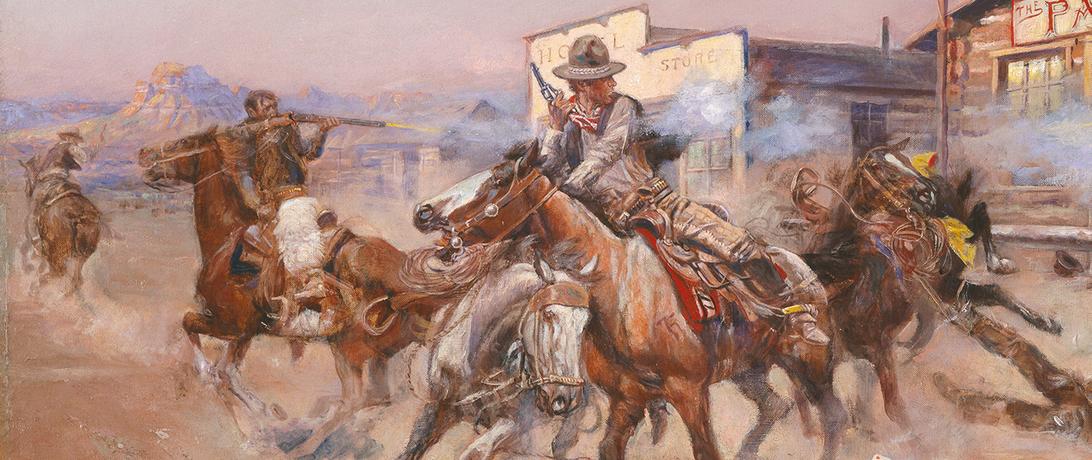
Something happened in the American West over the past 200 years, part of a global trend. It used to be that when there were tensions between locals here—disagreements over water use, or mineral rights, or just feuds that went back and forth between families—eventually someone would be killed.
Something happened in the American West over the past 200 years, part of a global trend. It used to be that when there were tensions between locals here—disagreements over water use, or mineral rights, or just feuds that went back and forth between families—eventually someone would be killed. Disagreements were settled with violence, at least some of the time, in a way that is mostly not true anymore. In the American West of the 21st century, the debates and tensions haven’t gone away; communities still debate over mineral rights and land use, but for the most part these debates don’t end in violence now.
Part of the reason for this change is that government simply outcompeted violence. When people have governments, or courts, or even socially accepted nongovernmental methods establishing how decisions will be made, violence becomes less likely. While this has been the argument of OEF and OEF Research since our founding, we haven’t had a clear argument for exactly why good governance works, and what it looks like. Governance for Peace, the book I recently co-authored with OEFR Fellow David Cortright and our colleague Kristen Wall, changes this. For the past several years we have been reviewing the existing research linking governance and peace with the goal of describing what governance for peace looks like.
In the empirical research on peace, we found four key elements of good governance. Some are things that are probably not surprising (i.e., governments that don’t violently exclude their citizens from accessing social goods are less likely to have conflict), but others are more of a surprise. Over the next several weeks, ThinkPeace will be running a series digging into the key aspects of governance for peace found in our book, and some of the implications or interesting facets of what each aspect might mean. To spoil the surprise, we found that governance is more peaceful when:
- states have enough security capacity to prevent outbreaks of violence, but don’t focus too much spending on security forces.
- states have the ability and the will to provide public goods such as healthcare and education to their citizens.
- states include all social groups in the benefits they provide.
- states operate in a way that lets everyone feel that their voice has been taken into account.
- states operate in open, accountable ways relatively free from corruption.
In the American West of the 19th century, these criteria were mostly absent—police forces were volunteer or nonexistent, and while the government may have been participatory, it was certainly not inclusive of the communities it governed. The result was tit-for-tat killings and spirals of violence as different groups took conflict resolution into their own hands. While that is mostly untrue for the American West today, in many parts of the world the same basic “Wild West” conditions persist. Fixing the underlying problems with governance may in turn help fix violence in those areas.
These elements of good governance are easy enough to identify, but harder to put into place. This research does suggest institutional development for peace is possible, but that it may be a challenge; because these four elements are inter-related, focusing on any one aspect to the exclusion of the others may make it difficult to accomplish sustainable peace. Getting from here to there is possible, but may prove to be a challenge.
A policy brief of the book's findings is available here.
Article Details
Published
Topic
Program
Content Type
Opinion & Insights